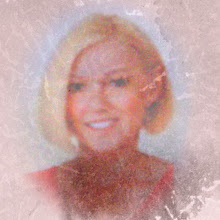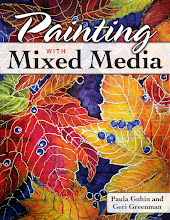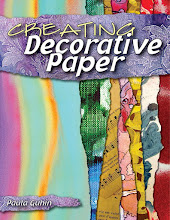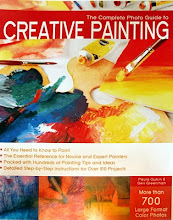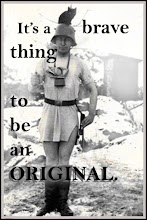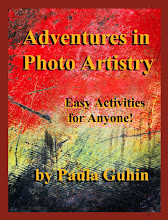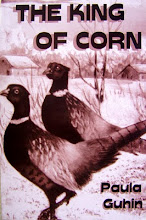A
printmaking plate can be created much
as is a collage, by gluing relatively
flat materials to a surface.
The resulting prints are called collagraphs.
The basic principle behind a collagraph
is that of relief printing.
Some artists distinguish between a
"collage relief print" and a collagraph, the latter of which is then
termed an intaglio print. (If the collaged plate is inked up and then wiped of
most of the ink on its uppermost surfaces, it is then run through an etching
press with dampened paper. Recessed areas or indentations in the plate hold the
ink and thus print on the paper.) Some printmakers combine both methods,
intaglio wiping and rolling surface color onto the plate.
For our purposes, we'll refer to collage relief prints as collagraphs. Materials with different surfaces and textures are assembled on a flat base (called the plate). The base is often made of Masonite, wood, sheet metal, or heavy cardboard. Objects in low relief are first glued to the rigid backing. The heights of the various materials should be somewhat similar--there shouldn't be too much difference in elevation. Put down newspapers or plastic to shield the work area.
 |
| Simple collagraph printing plate before being inked up and used. |
Possible Materials for Collagraphs:
Woven fabric
Lace
Doilies
Rickrack
Embroidery
Braid
Buttons
Toothpicks
Clock parts
Gaskets
Sandpaper
Coins
Textured wallpaper
String
Feathers
Washers
Flat rubber pieces
Mesh
Corrugated cardboard
Screening
Flattened plants
When the glue is dry, you can make the printing plate more long-lasting
with a coat of gesso, varnish, or acrylic medium. (Varnish is a protectant,
usually clear, that may also affect the sheen of the surface.)
When
the sealant has cured, select a soft but strong printing paper.
Printing the Relief Plate:
Water-based block printing ink cleans up easily later. Squeeze ink onto a glass slab and smooth it out with a brayer. Ink up all the raised areas on the collagraph plate evenly with a brayer (an ink roller) . Varied heights require careful inking. If you miss any areas, try daubing ink on the printing surface with a brush or a piece of felt.
Quickly place a clean sheet of printing paper on the inked surface. If the paper is thin, cover it with another sheet of paper before you begin rubbing. Press over it with your fingers and the flat of your hand, gently rubbing to transfer the ink to the paper. Take care to keep from tearing the printing paper. Finish by rolling a clean brayer over the paper with as much pressure as possible without damaging the paper. Peel the paper carefully from the plate and set aside (or hang it up) to dry.
The printing plate is usually, but not always, re-inked for each impression. Sometimes enough ink remains on the plate that another print, a "ghost" image, can be made.
Variations include making a multi-colored print by inking up various parts of the plate in different colors, or printing only some elements separately on the same sheet of paper. You can even add more color by hand after the print is dry!
 |
| The same plate was printed 4 times on one paper. |
(For an interesting and unusual result, overprint several different collagraph plates to create a single artwork on the same sheet of paper.)












